Every year the world’s brightest and best car manufacturers descend upon Goodwood in Chichester to the Festival of Speed. It’s a heady celebration of the past, present and future of machines that go fast.
A relatively new addition to the festival is the Future Lab, which has been growing in size and stature every year. The exhibition celebrates innovation at the bleeding-edge of tech, transport and infrastructure, including other-worldly machines like Airbus’s Mars Fetch Rover, Boston Dynamics’ Spot the robot dog and Gravity Industries’ jet pack.
Here’s our pick of the tech and trends that’ll we think will shape the future of how we get around.
1. Flying cars finally take off
For once, here’s a flying car that’s more than just a pretty picture. The Pal-V Liberty is the first car to be licensed by the EASA (European Union Aviation Safety Agency).
In other words, this flying car is a production-ready vehicle that’s legally allowed to take to the skies, and the company is now taking orders. Indeed the makers of the Pal-V have said that this carcopter will take to the skies at next year’s Festival of Speed.
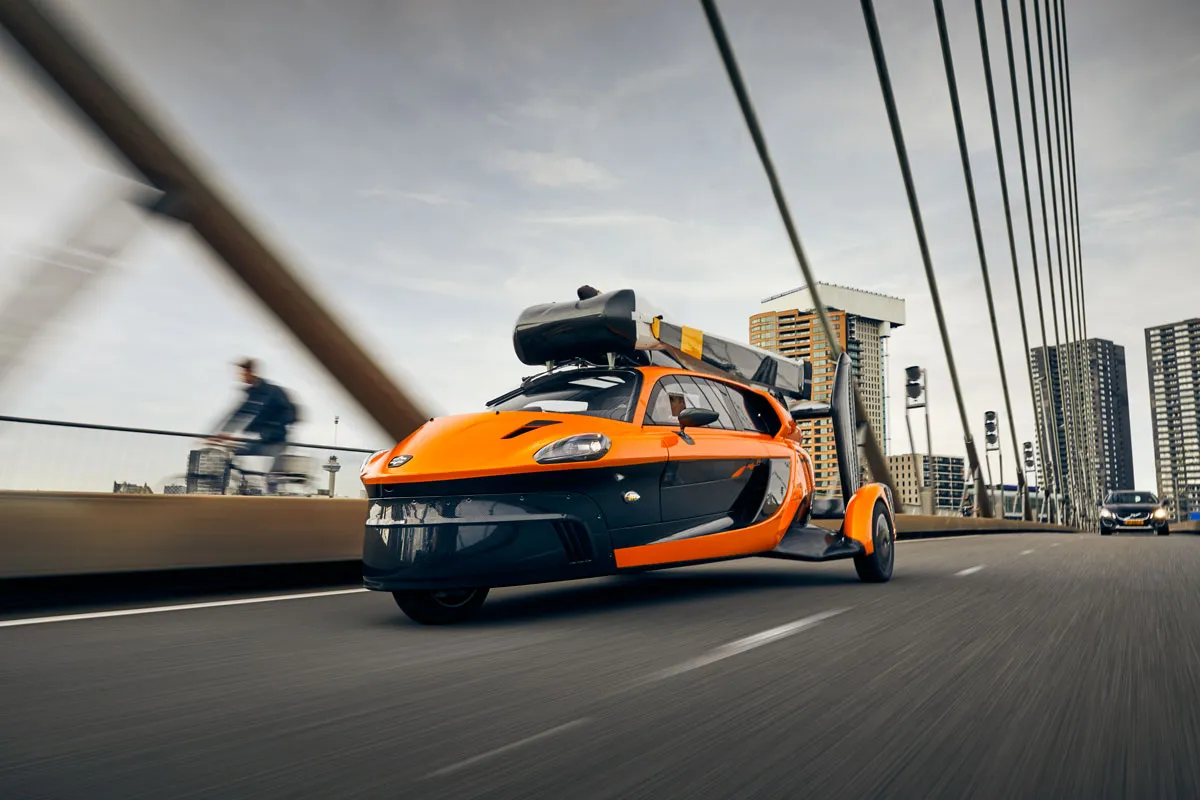
It is perhaps a bit of an oversimplification, but the Pal-V is essentially a helicopter that folds up neatly and drives off the helipad and straight onto European roads - very James Bond. Plus, the first Urban Air Port, designed with flying cars and drones in mind, will be built in Coventry this year, so it might not be as long as you think before we start seeing flying cars overhead.
2. Jet pack racing is coming soon to a tropical island near you
Over the next decade, you can expect to see a lot more people in jet packs, especially if Richard Browning, the founder and chief test pilot of Gravity Industries has his way. So far the ‘ Real-life Iron Man’ has enjoyed huge success with his tech, with the Armed Forces and Search and Rescue investigating how they can adopt the technology.
But that’s just the beginning. “We were ready to launch a Jet Pack race series in Bermuda before the pandemic,” says Browning.
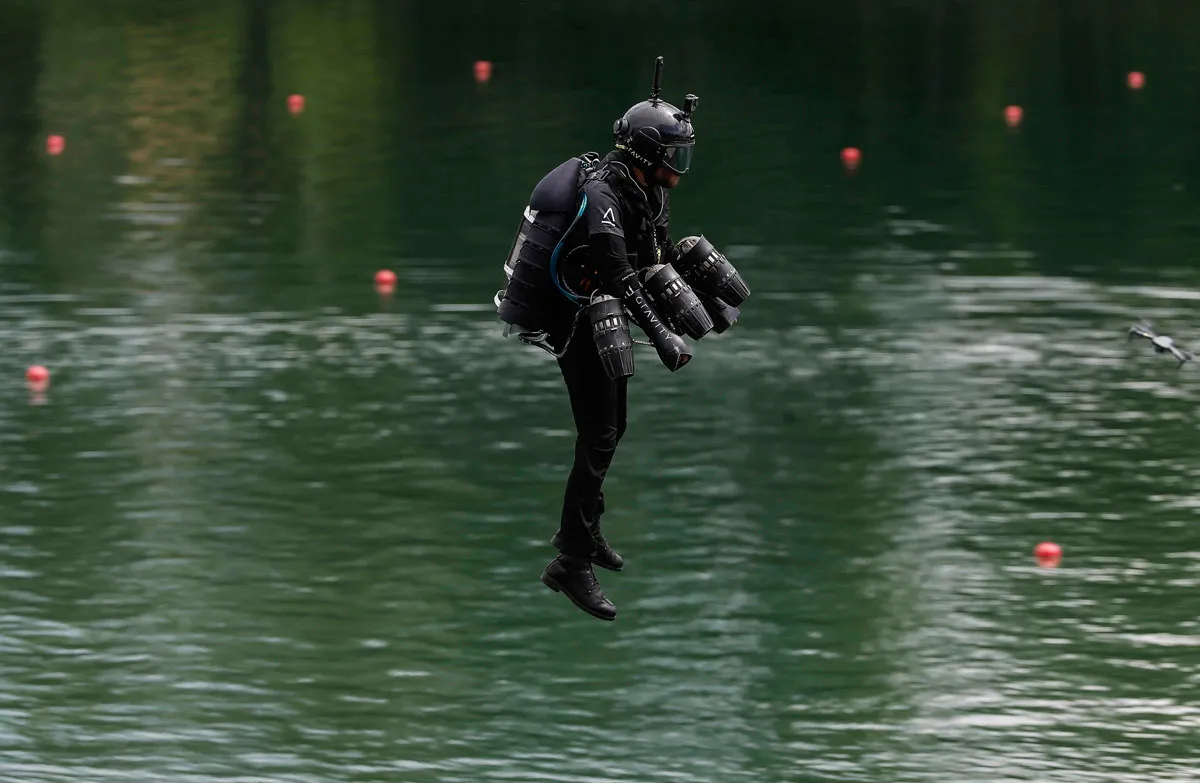
“We were three weeks out from launching it. It’s all ready to go as a concept, but we have to wait until the world is over the challenges of COVID. We’ve got people like Tim Peake and Bear Grylls who have trained with us. We’ve got that alumni. Even Tom Cruise wants to come and fly it. There’s an interesting array of people who could potentially line up and compete against each other. Other than war, competitive racing is the best method human beings have come up with to push capability.”
At Goodwood’s Future Lab, Gravity Industries revealed its first electric version of the jet pack suit. “We came here without getting it working,” says Browning. “But this morning we did it, after a night of continual modifications.” The suit was able to lift its pilot off the ground and hover for a brief period.
“It was really an experiment in seeing how close we could get to the abilities of the proper jet suit, knowing all the limitations of lithium battery capacity. I quite like letting people see what innovation is. It’s often not being sure about if something will work, and having to survive setbacks and challenges.”
4. Small delivery robots will make millions of short deliveries
If you find yourself strolling through the streets of Northampton or Milton Keynes, you might encounter one of these knee-high robots. A network of them, run by the company Starship, is already at work delivering shopping, takeaways and even prescriptions across town to customers using its app right now.
The robots are fully autonomous, and can go pretty much anywhere a pedestrian does, climbing curbs and using street crossings while dodging those of us on two and four feet. When it reaches its destination, the ‘bot greets you and pops the lid to its insulated storage compartment.

To date, Starship has already completed over one and half million deliveries around the world – so the idea clearly works, and we think it’ll only be a matter of time before they’re pootling around towns and cities worldwide. “People seem to have really adopted them,” says Henry Harris-Burland, the VP of marketing for Starship.
“At first, they’re full of questions, and they think it’s really sweet. And by the second time they see one they just ignore it – it quickly blends into the background of the city.”
5. Cars could start to look very different
It’s easy to dismiss a concept car as a flight of fancy – they rarely have to make it to the real world. But the Airo, which was designed by Heatherwick Studio (whose work you might recognise in the shape of the new Routemaster bus), has been commissioned to be built in 2023 by a Chinese car brand IM motors.
Thomas Heatherwick’s ambition is that we reconsider the car as an oasis in the midst of space-starved cities.
“Usually, if you see a person sat in the car in the driveway you just think they’ve had a fight with their other half,” says Heatherwick.
“What if you could have a car with the kind of furnishings you see on a business class flight, that lets in light, shuts out sound and could even provide you with space to work or sleep. Somewhere you could go to have some quiet, or to work.”
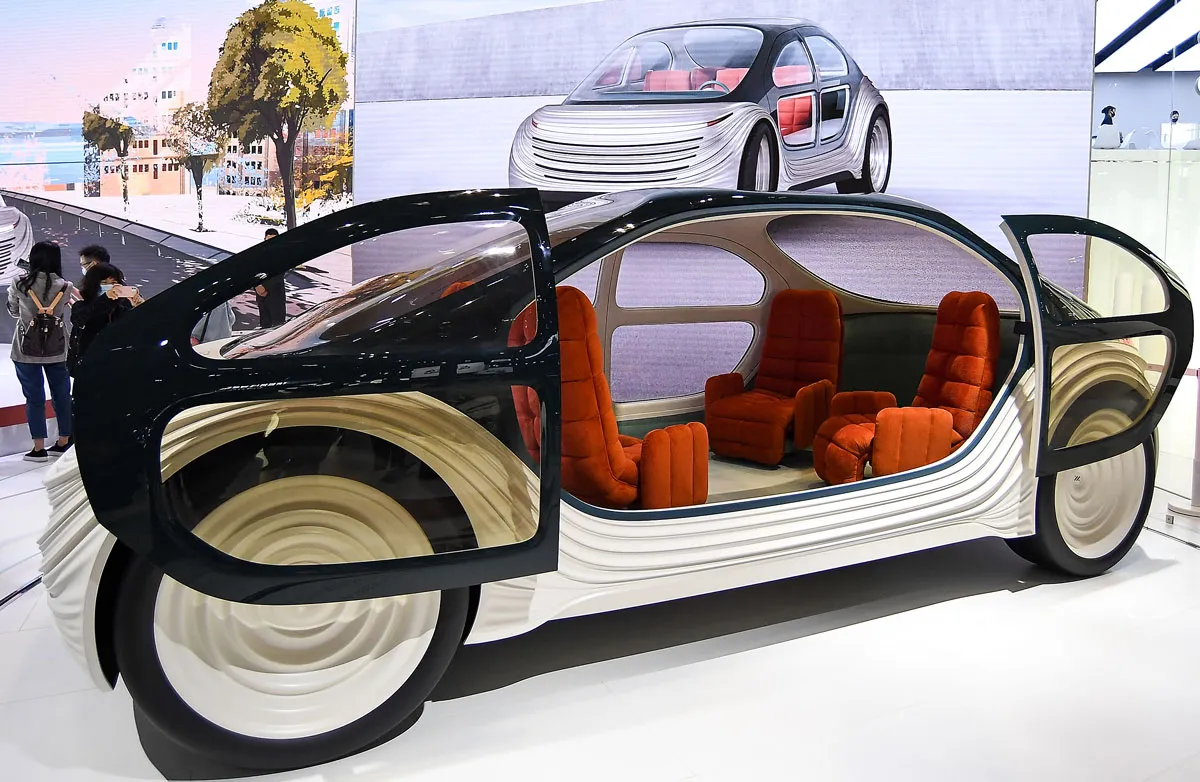
It’s a neat idea, especially as we creep towards cars being able to drive us autonomously. The car is all-electric too, but Heatherwick hopes the Airo can go one step further in the green stakes. The Airo is equipped with an air filter that hoovers up pollutants and it moves through the city. “The car’s HEPA filter, we think, would be able to clean up a tennis ball’s worth of particulates over a year’s use.”
6. Electric, autonomous trucks could make cities quieter, cleaner spaces.
An armada of trucks and lorries have swept into our cities ushered in by the sharp rise in popularity of online shopping. Clearly, this trend is at odds with many cities’ ambitions to clean up their air pollution and reduce congestion.
This is where an autonomous truck, powered by electric batteries help clean things up. Enter Einride. This “freight mobility platform” runs autonomously, with help from “overseers” who can be called upon remotely via a 5G network connection if one of the “pods”, as they call them, gets stuck.
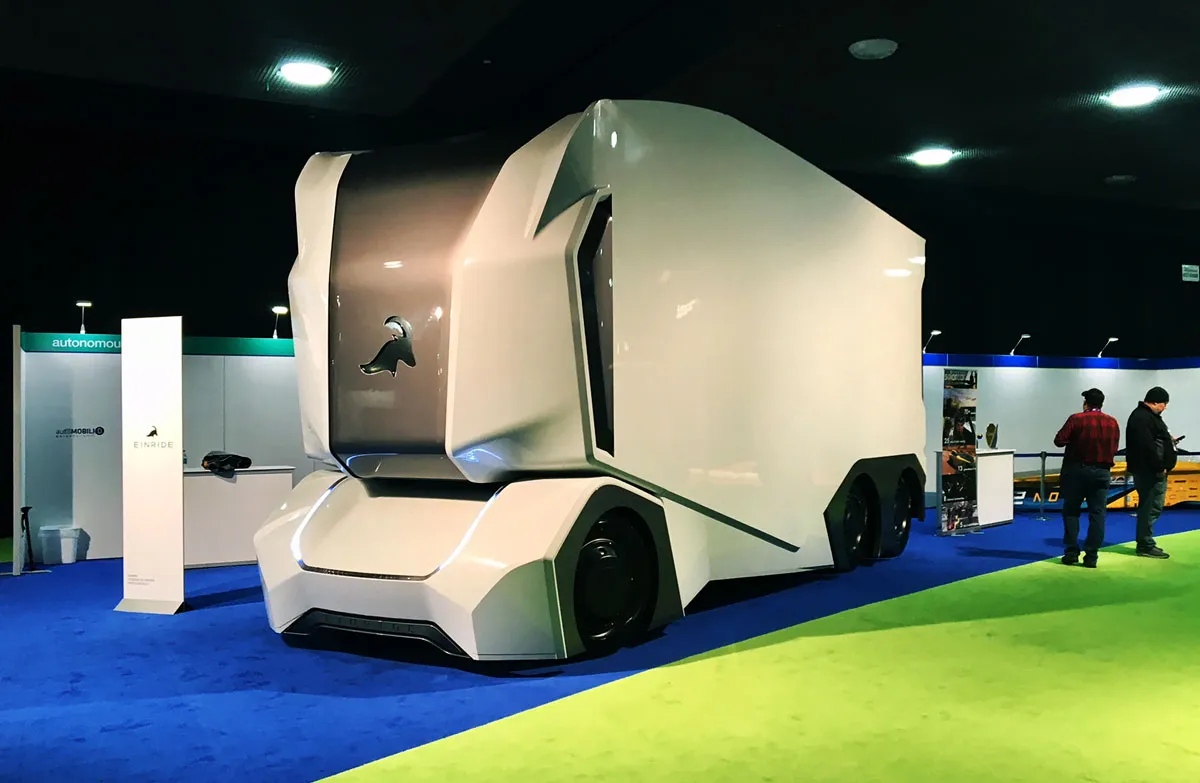
When this happens, someone behind a desktop computer gets sent an alert, and they are presented with a set of plotted routes that will help the truck get out of the situation. If none of those appear to work, you’re able to take over remotely via a tiny jog wheel and joystick.
From a corner of the Festival’s of Speed’s Future Lab in Chichester, we were able to take control of a truck in Gothenburg, Sweden and drive it around their test track. At first it felt undeniably spooky, moving a few tons of lorry around with a small joystick over an internet connection with zero physical feedback, but the tech is so good that it quickly becomes fairly mundane.
Truck drivers at the show looked over nervously, but the company drivers are likely to be the first operators. They say one overseer could look after 10 vehicles at a time. As it stands, the first customers will be using autonomous trucks (when they’re legal) to fill staff shortages, not replace drivers.
7. 5G will make cars safer
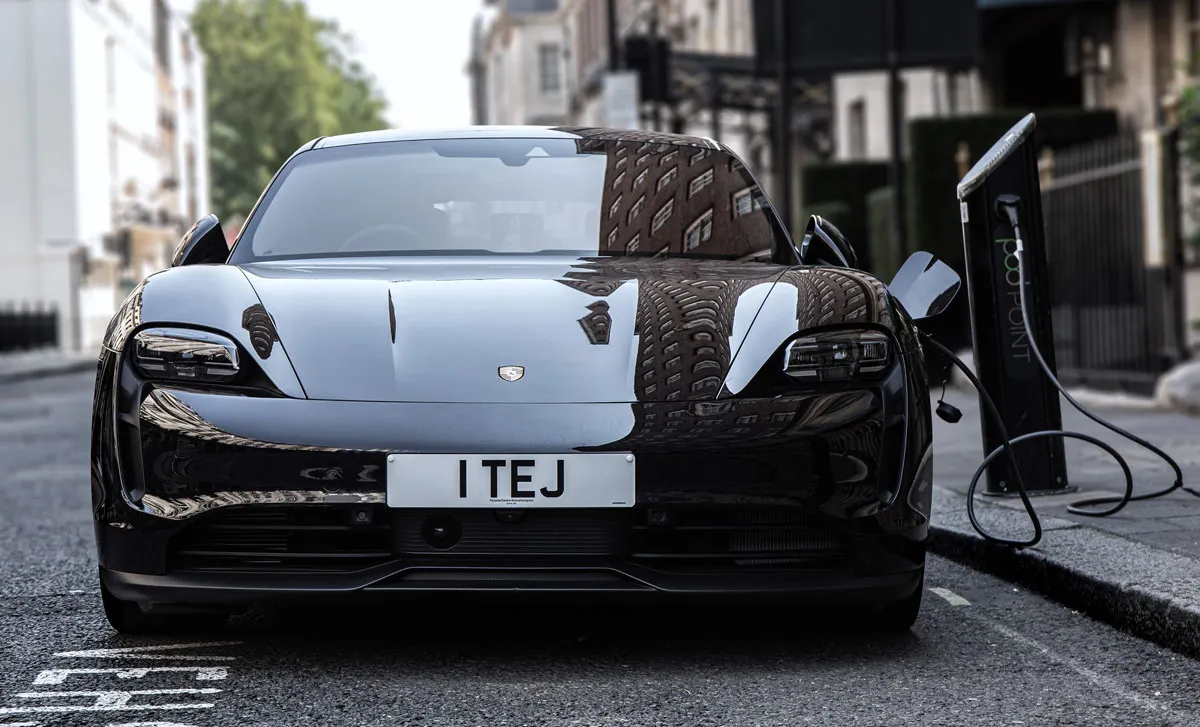
The next generation of new, premium cars are likely to come equipped with 5G, but what does that mean for drivers? Well, the latest electric cars can already receive over-the-air software updates from the cloud which, in the case of the Tesla, has meant real improvements in car performance because of tweaks to the software that manages how power is delivered from the battery to the wheels.
That’s a nice bonus, but the real benefits of 5G might come in the shape of safety features. While Porsche's sportiest models were flying up the Goodwood hill, it revealed the company were trialling 5G car networks which would effectively warn each other about road hazards they encounter, whether or not the driver themselves registered them.
Footage could be simply uploaded to the cloud and analyses en masse and then sent back to the car almost instantaneously. A car connected to a 5G network could effectively see around corners and slow down in anticipation of an accident further down the motorway.

